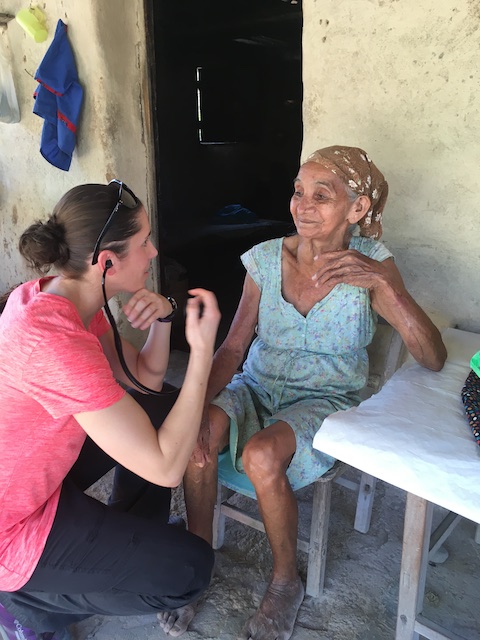Brittany Canfield, RN: UMASS Amherst College of Nursing
Honduras: February 2020

My clinical experiences in Guachipilincito, Honduras and the communities surrounding Camasca, Honduras were amazing, educational, and eye-opening. Throughout my three weeks, I developed a deep respect for the difficult and strenuous way in which most Hondurans live. All of our Honduran patients voiced such an appreciation for the healthcare and medical resources that the brigades were able to provide for them, yet in the grand scheme of the resources that the United States healthcare system has, what we were able to provide was unfortunately minimal. Providing care in Honduras was very different from the U.S. as we did not have the luxury of blood work, x-rays, or any other diagnostic testing (other than blood glucose and urine dipsticks), or even an easy way to refer patients to specialists. The difficulty of accessing healthcare services and health education in Honduras was very eye-opening.
My first brigade was with Brown/Wingate in Guachipilincito (Guachi) at a clinic that Brown University built. We worked in the clinic for four days and provided both acute and chronic care, as well as health education, to patients who would walk upwards of two hours to be seen by our brigade. My brigade with MAHEC (Mountain Area Health Education Center) was very different in that we traveled to a different community on each of our seven clinical days and we did our clinical assessments in big open rooms in churches and schools.
Overall, my experiences on this trip were incredible and something I will never forget. From my fellow medical brigade members, to the Shoulder to Shoulder employees and interpreters, to our Honduran patients, I feel extremely grateful to have met all of these wonderful individuals from whom I learned so much. This experience has definitely fueled my desire to pursue a future of providing care to populations and communities that are underserved. I am extremely grateful to the Benjamin H. Josephson Fund for providing me with the financial support to make my trip a reality.